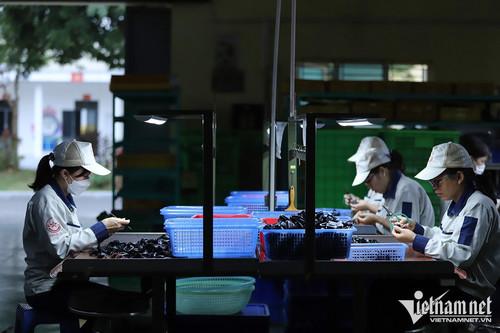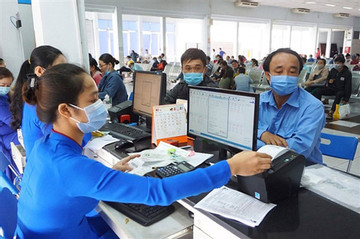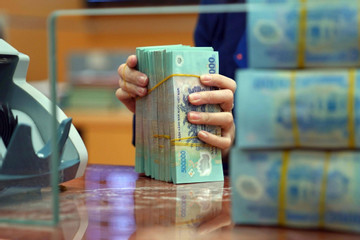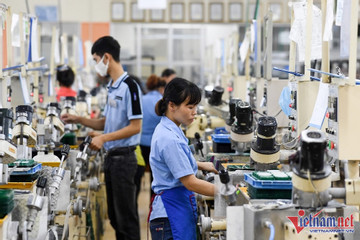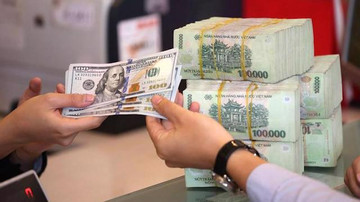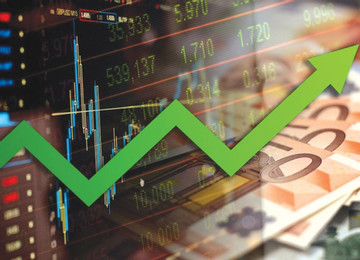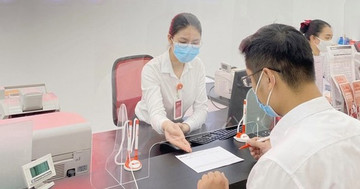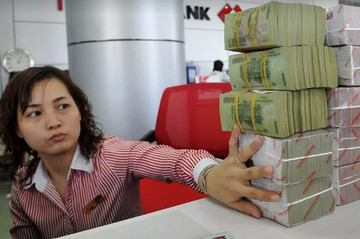- © Copyright of Vietnamnet Global.
- Tel: 024 3772 7988 Fax: (024) 37722734
- Email: [email protected]
credit growth rate
Update news credit growth rate
Banks have money but businesses don’t want to borrow
Deputy Governor of the State Bank of Vietnam (SBV) Dao Minh Tu says a bank officer told him that many businesses don’t have demand for capital and many want to give newly borrowed loans back.
Top business stories in Vietnam (Feb 27 – March 3)
Noteworthy stories of the week: Freight charge falls by 40 percent; the number of foreign travelers soars by 36 times; some commercial banks are granted more credit room for 2023; banks slashed deposit interest rates.
Bank shares predicted to boom in H2/2023
Analysts say bank shares will face difficulties in the first half of the year because of the poor performance of the real estate market, the export growth slowdown, and high interest rates. But changes will occur in the second half of the year.
2% interest rate subsidy package remains inaccessible, say enterprises
Many enterprises complain that they cannot access the 2 percent interest rate subsidy package, and banks are not keen on the program because of complicated procedures.
Businesses complain about capital shortage, SBV to raise credit limit
Commercial banks report that their credit is growing well and loans are provided to production and business projects, but businesses say that they cannot get loans.
Curbing inflation: the optimal goal of monetary and fiscal policies
Monetary and fiscal policies have been tightened to fight inflation in Vietnam (though it is among the lowest in the world), instead of aiming to recover production and boost growth, which is needed after several years of pandemic.
VND remains most stable currency in region: Report
With the internal strength of the currency and the central bank's flexible management, the VND is expected to depreciate by a maximum of 3% in 2022.
Why are interest rates picking up?
The first half of the year saw interest rates edging up 0.5-1 percentage point against the end of last year. Liquidity in the banking system was blamed for interest rate hikes.
SBV untangles 2-percent interest rate support package
According to the State Bank of Vietnam (SBV), by the beginning of July, the whole economy's credit reached VND11.4 quadrillion, up 9.35 percent, while it only increased by about 6 percent in the same period last year.
Joint-stock banks reap high profits, threaten positions of state-owned Big 4 banks
Several commercial banks reported profits higher than VND10 trillion for the first half of the year.
Credit demand set to grow in the final half of 2022
In the last half of 2022, banks may ease loan conditions so that more customers could access credit, given the positive economic outlook and their improving financial capacity.
Extension of Circular 14 unneccessary: insiders
The expiration of Circular 14 on debt rescheduling and interest rates reduction in late June is likely to expose banks to higher levels of non-performing loans (NPLs), yet insiders say it is unnecessary to extend it.
Banks develop new businesses to expand operations
A commercial bank owned by a businessman that once had a startup in Eastern Europe has decided to invest in a new business as bank share prices have fallen.
Banks upbeat about Q3 2022 business results
A majority of credit institutions (CIs) are optimistic about their business performance in Q3 2022, the State Bank of Việt Nam (SBV)’s latest survey on business trends of credit institutions showed.
Why do local interest rates remain unchanged amid inflation?
SBV will continue to keep interest rates unchanged in order to sustain macro-economic stability and control inflation, in contrast with the ongoing trend adopted by central banks of many countries worldwide, according to economic experts.
Real estate credit: tightening may cause stagnation, pressure on inflation
The draft circular amending several articles of Circular 39 prescribing lending transactions of credit institutions and/or foreign bank branches has raised concern about the congestion of capital flow into the real estate sector and high inflation.
Why it’s tough for lending rates to go lower
This year, commercial banks have so far revised down many times their deposit and lending rates. However, lending rates are thought to be high. Why are these rates difficult to be further slashed?
Liquidity abundant, banks given larger room for credit
 State Bank Vietnam (SBV) Governor Le Minh Hung said at a conference on reviewing socio-economic development in the first half of the year that SBV has adjusted the 2020 credit growth rate limits of some banks.
State Bank Vietnam (SBV) Governor Le Minh Hung said at a conference on reviewing socio-economic development in the first half of the year that SBV has adjusted the 2020 credit growth rate limits of some banks.
Capital in oversupply, banks slash interest rates
 Commercial banks have slashed the deposit interest rates by 0.25-0.5 percent per annum as credit growth continues to be sluggish.
Commercial banks have slashed the deposit interest rates by 0.25-0.5 percent per annum as credit growth continues to be sluggish.
Local banks warn they may become ‘hostage’ of businesses
 If large businesses cannot pay their debts, they may put pressure on banks to lower requirements for loans.
If large businesses cannot pay their debts, they may put pressure on banks to lower requirements for loans.
